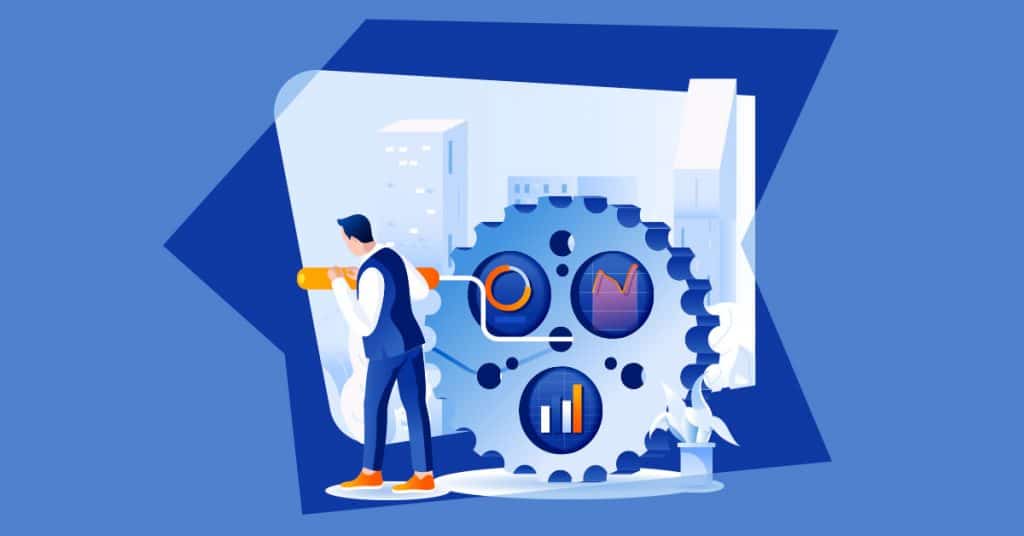

With data protection and consumer privacy regulations rapidly expanding, and AI regulations gathering on the horizon, taking a comprehensive and strict approach to cybersecurity is no longer optional. To comply, organizations are adopting a DevSecOps approach to development. The following tips will help teams improve DevSecOps practices to create a more mature application security posture.
Integrating security as early as possible into the DevSecOps methodology — a concept known as shifting left — improves security, reduces costs, and improves overall efficiency. Including security checks and protocols from the initial stages of development allows developers to identify potential vulnerabilities early and address them promptly. This minimizes the risks of security breaches later on.
This proactive approach is more effective and costs less than traditional models where security is often an afterthought and tacked on towards the end of the software development lifecycle (SDLC). It’s much more expensive to fix flaws later in the SDLC when they’re embedded in the codebase.
A shift-left mindset encourages a culture of shared responsibility among developers, security teams, and operations. It breaks down silos between departments and encourages collaboration. The resulting codebases are more secure because developers better understand security practices.
All major cybersecurity frameworks include provisions for designing and developing with security in mind. Shift left helps development teams comply with industry standards and regulations by making sure their software meets security requirements.
Today’s codebases are often massive and spread among different departments. Almost all applications are built on open-source components. The combination of these two factors can lead to hidden open-source components and dependencies.
Development teams can’t protect against threats they don’t know about. A comprehensive software bill of materials (SBOM) provides a list of all components of an application. It’s a cybersecurity best practice and was specifically listed in the president’s Executive Order on Improving the Nation’s Cybersecurity.
When developers understand all components, dependencies, and libraries in their software, they can significantly improve security and compliance. A well-documented codebase lets DevSecOps teams identify and mitigate vulnerabilities. They can quickly spot outdated or vulnerable components and patch or replace them.
Many industries have strict regulations regarding data security and software integrity. Keeping an accurate inventory of all code components helps organizations conduct audits and comply with legal standards, so they can avoid potential fines and reputational damage.
A transparent codebase also supports more efficient incident response. If there is a security incident, teams can quickly pinpoint affected areas, assess the impact, and implement fixes. A quick response can minimize downtime and reduce organizational risk.
A strong cybersecurity framework makes it easier for everyone to follow best practices. Security as code takes a familiar developmental approach and mimics it to improve security. Security as code clearly maps out places where security controls can be directly implemented into the software development lifecycle through automated, codified policies and procedures. This approach guarantees security isn’t just an afterthought and leads to more secure and resilient applications.
Security as code promotes consistent and repeatable security practices. By automating security checks and policies, DevSecOps teams enforce security measures uniformly across all stages of development and deployment. This consistency reduces human error and applies security standards reliably every time teams write, test, or deploy code.
Automated security tools and scripts can be integrated into the continuous integration/continuous delivery (CI/CD) pipeline with security as code. This gives DevSecOps teams immediate feedback. Early detection of vulnerabilities allows developers to immediately remediate flaws before they’re propagated through the development cycle.
Security as code also makes security everyone’s responsibility. Developers, operations, and security teams work from the same set of tools and processes.
Codifying security policies makes them easier to scale and adopt. As new threats emerge — which is happening at exponential rates since the release of generative artificial intelligence — security code can be updated and deployed quickly across all environments.
Development teams can detect vulnerabilities and bugs early by testing continuously. Running automated tests at every stage of development surfaces potential issues and reduces the risk of security breaches and functional defects reaching production. As with the other measures, this proactive approach minimizes the cost and complexity of fixing issues later in the SDLC.
Continuous testing also supports faster feedback loops. Developers receive immediate insights into the security and performance of their code so they can make quick adjustments and improvements. This accelerates development time while maintaining security and quality.
Regulatory and industry compliance standards have become so complicated that it’s almost impossible to keep up with them manually. Continuous testing eliminates the need to try. Automated security tests can verify that applications adhere to required security policies and reduce the potential for noncompliance.
Automated tools should be included in every other process listed above. Automation integrates security checks and processes into every phase of development, from coding through deployment.
Automated tools support continuous and consistent security testing. Static application security testing (SAST) examines the codebase before runtime. DevSecOps teams can test new code before it’s committed to the codebase. Dynamic application security testing (DAST) tests the code at runtime and software composition analysis (SCA) allows flaws and bugs to be identified and addressed immediately.
Most effective DevSecOps practices would be prohibitively time and labor-intensive if they had to be performed manually. Automation handles routine checks and updates so team members can focus on high-value tasks.
Automated security testing should be performed on a regular basis, including:
Developers are facing increasing cybersecurity threats, regulatory requirements, and consumer demand for tighter security measures. When DevSecOps teams consider security when they first begin to design applications, they can prepare for and mitigate security risks. Kiuwan’s end-to-end application security platform empowers developers to create resilient applications through automated testing and scanning. Reach out to request a free demonstration.


